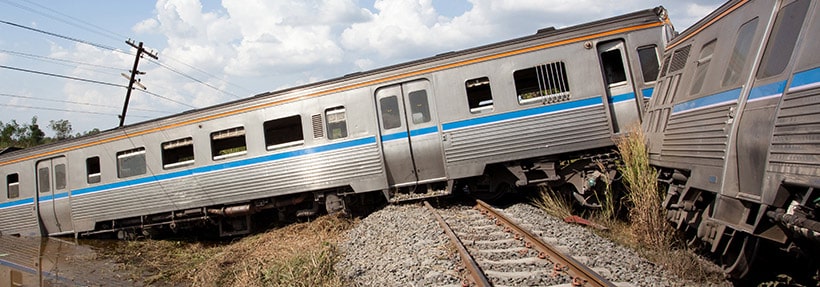Fishkill Injury Attorney Serving Wappingers Falls, Beacon, Lagrangeville and Nearby Areas of Hudson Valley

Train passenger injuries are a devastating thing for anyone to have to deal with. When you are injured as a result of this type of train accident, you deserve compensation to help you recover and move on from this life-altering event.
Hudson Valley attorney Ira Maurer has extensive experience focused in cases involving train and railroad accidents. He will stand at your side and advocate for maximum compensation on your behalf. For your free case review, please call our law office at 845-896-5295.
Common Types Of Train Passenger Injury Cases
Ira Maurer has handed virtually all types of passenger injury cases, including those caused while:
- Boarding a train
- On-board a train
- Exiting a train
- On a railroad station platform
- On a railroad station stairway
- In a railroad station parking lot
The gaps between trains and station platforms continue to be a source of falls. Passengers boarding and exiting LIRR and Metro-North trains continue to be injured stepping into the gap between the trains and station platforms. Some of these gap-related train accidents have received wide-spread news coverage.
Following a 2006 fatality of an 18-year-old Minnesota woman, the MTA committed $40 million to what they called the Gap Remediation Project. The project included extending platforms with attachable boards. Although gap falls on LIRR platforms have fallen since the project was completed in 2012, there continue to be people who get injured falling through the gaps or tripping on them.
When Train Passengers Are Injured In A Slip And Fall Accident
Train passenger injuries run the gamut from bumps and bruises to broken spines and brain injuries. One of the most common types of injuring accidents on and near trains are slip and falls, which can lead to the following serious physical injuries:
- Torn knee cartilage and ligaments
- Herniated discs
- Fractured vertebrae
- Ankle sprains and fractures
- Torn rotator cuffs and other shoulder injuries
- Brain injury
Unfortunately, many people fail to report a slip and fall injury after it occurs because they are embarrassed they fell. If you fall aboard a train or on a platform, or elsewhere on railroad property, you should report the injury immediately to the railroad. Doing so may improve your chance at recovering compensation. If you do not report it and then try to claim that you were injured, the railroad company and their attorneys will say there is no evidence of a slip and fall occurring on their trains or property.
Should You Pursue A Claim After A Train Passenger Injury?
Even if you feel fine following the accident or mishap, there may be underlying injuries that could worsen and begin to show symptoms as time passes. Diagnostic tests such as MRIs may even be necessary to make certain injuries clear to your doctors.
To leave your options open for pursuing compensation, you may want to do the following:
- Report your injury right away
- If you have a camera device and are safely able to do so, take pictures of your injuries and any of the things that you believe contributed to the accident that injured you
- Get medical attention, even if you don't think you have a serious train passenger injury
- Contact train accident attorney Ira Maurer for help pursuing compensation
Ira Maurer reviews your case for free so that he can learn about your case and explain your options, while you decide if moving forward with a claim is something you want to do.
If you or a loved one was recently injured as a train passenger, please call the Maurer Law Firm at 845-896-5295 for a free case review. Ira Maurer has more than 40 years of experience with train accident cases and serves all of Fishkill, Myers Corner, Wappingers Falls, Beacon, LaGrangeville and nearby areas of Hudson Valley.





